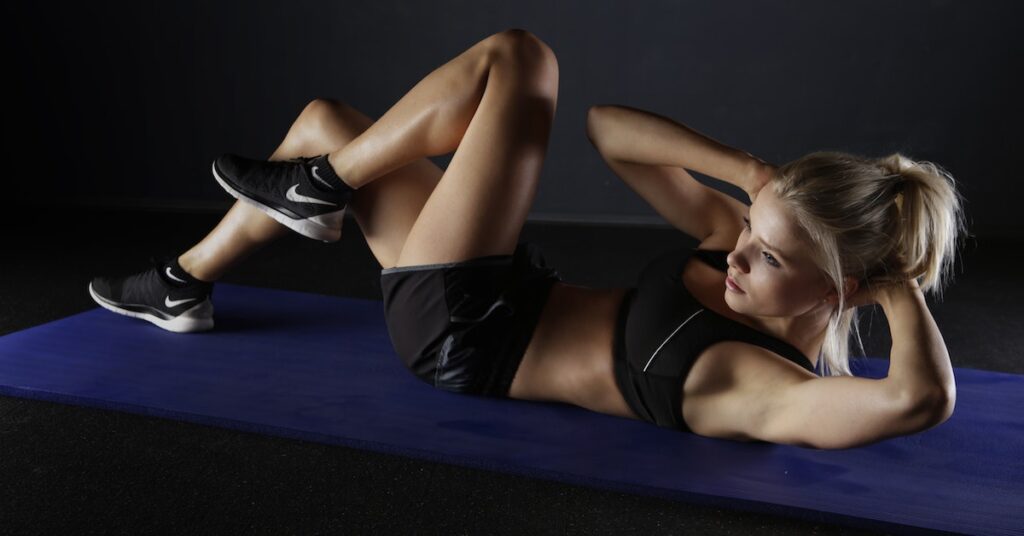How do I Start Exercising and Why Exercise is Important?

Starting an exercise routine can be intimidating, especially if you’re new to it or have been inactive for a while. Exercise is an main facet of upholding a healthful behavior. It has numerous physical and mental benefits that can improve the quality of your life. Here are just a few reasons why exercise is so important:
- Exercise helps to maintain a healthy weight: Regular exercise can help you to maintain a healthy weight and reduce the risk of obesity. This is because exercise helps to increase your metabolism and burn calories, which can help to prevent weight gain.
- Exercise can improve your cardiovascular health: Engaging in regular physical activity can help to improve your cardiovascular health by increasing your heart and lung function. This can help to reduce your risk of heart disease, stroke, and other health problems.
- Exercise can improve your mental health: Exercise has been shown to have a positive effect on mental health. It can weaken stress, improve disposition, and increase pride. Exercise can still help to humiliate the risk of evolving environments in the way that depression and tension.
- Exercise can improve your sleep: Getting regular physical activity can help to improve the quality of your sleep. Exercise can help you to fall asleep faster and stay asleep longer, which can lead to better overall sleep quality.
- Exercise can help in order to avoid chronic ailments: Regular exercise can help to defeat the risk of cultivating never-ending afflictions such as type 2 diabetes, malignancy, and osteoporosis.
Exercise can be enjoyable and rewarding once you get into it. Here are a few pointers to get you started:
Find an activity that you enjoy:
This could be walking, running, dancing, swimming, cycling, or any other activity that gets your heart rate up. If you enjoy the activity, you’ll be more likely to stick with it.
Set realistic goals:
It’s important to have something to work towards, but be sure to set goals that are achievable. If you’re just starting out, your goal might be to exercise for 30 minutes a day, 3 days a week. As you get stronger and more comfortable, you can gradually increase the intensity or duration of your workouts.
Start small and build gradually:
If you’re new to exercise, it’s important to ease into it gradually. Start accompanying short workouts and evenly increase the power and event as you catch more convenient. This will help reduce the risk of injury and make it easier to stick with your routine.
Find a workout buddy:
Having a friend or family member to exercise with can be a great motivator and help keep you accountable. It can also make the activity more enjoyable.
Vary your workouts:
Doing the same workout every day can get boring, so try to mix it up by doing different activities or trying new workouts. This can still help lower the risk of become worn injuries.
Don’t feel discouraged:
It’s normal to have days when you don’t feel like exercising, or when you don’t see progress as quickly as you’d like. It’s important to be patient and to keep in mind that progress takes time. Don’t get discouraged, and remember that every little bit of activity counts.
Types of Exercises:
Starting an exercise routine takes commitment and discipline, but the benefits are worth it. By following these tips and finding a form of exercise that you enjoy, you can start building a healthy, active lifestyle that will serve you well for years to come. There are many different types of exercises that can be performed, each targeting specific muscle groups and providing a range of benefits.
1. Aerobic Exercise:
Aerobic exercises, also known as cardio, are activities that increase the heart rate and improve cardiovascular endurance. Examples of aerobic exercises include running, swimming, cycling, and dancing. These types of exercises can help to improve cardiovascular health, reduce the risk of heart disease, and improve lung function.
2. Strength Exercise:
Strength preparation exercises are exercises that include utilizing weights or additional resistance to build muscle bulk and intensity. Examples of strength training exercises include lifting weights, using resistance bands, and performing bodyweight exercises such as push-ups and squats. Strength training can help to increase muscle mass, improve bone density, and reduce the risk of injury.
3. Flexibility Exercises:
Flexibility exercises, also known as stretching, are activities that help to improve the range of motion in the joints and muscles. Examples of flexibility exercises include yoga, Pilates, and basic stretches such as touching your toes or reaching for the sky. Flexibility exercises can help to reduce muscle tension, improve posture, and prevent injuries.
4. Balance Exercises:
Balance exercises are activities that help to improve coordination and stability. Examples of balance exercises include standing on one leg, performing a single leg squat, or using a balance board. These types of exercises can help to improve balance and reduce the risk of falls, especially in older adults.
5. Plyometric Exercises:
Plyometric exercises are high-intensity, explosive movements that involve quick, powerful movements. Examples of plyometric exercises include box jumps, jump squats, and burpees. These types of exercises can help to improve power and agility, and are often used in sports training.
6. High-intensity interval training (HIIT):
High-intensity interval training (HIIT) is a type of exercise that consists of short bursts of intense activity followed by brief intervals of relaxation. HIIT workouts can be performed with a variety of exercises, including cardio, strength training, and plyometrics. HIIT workouts are known for their ability to burn a large number of calories in a short period of time and can help to improve cardiovascular endurance and increase metabolism.
7. Mind-body Exercise:
Mind-body exercises are activities that involve both physical movement and mental focus. Examples of mind-body exercises include yoga, tai chi, and meditation. These types of exercises can help to improve balance, flexibility, and relaxation, as well as reduce stress and improve mental clarity.
- There are also many specialized exercises that can be performed for specific purposes or goals. For example, pre- and post-natal exercises are designed specifically for pregnant women and new mothers to help them stay in shape and prepare for childbirth. Rehabilitative exercises are used to help individuals recover from injuries or surgeries and can help to improve mobility and strength.
- It’s important to remember that different types of exercises can provide different benefits and it’s important to incorporate a variety of exercises into your fitness routine. For example, combining strength training with cardio and flexibility exercises can help to improve overall physical fitness and reduce the risk of injury.
- In conclusion, there are many different types of exercises that can be performed to improve physical fitness, reduce the risk of chronic diseases, and improve mental health. Whether you’re looking to build strength, improve cardiovascular endurance, or just relax and de-stress, there is a type of exercise that can help you reach your goals. By combining a difference of exercises into your health routine, you can increase your overall well-being and welfare.
What does routine exercise mean?
- Regular exercise is defined as any type of physical activity that is performed on a consistent basis with the goal of improving physical fitness and overall health. It can involve endeavors like walking, running, to bicycle, swimming, intensity training, and more. While the type of exercise and frequency can vary based on individual goals and preferences, the key to reaping the benefits of exercise is to make it a regular part of your routine.
- There are numerous benefits to regular exercise, both for physical and mental health. Physically, regular exercise can help to improve cardiovascular health, reduce the risk of chronic diseases such as obesity, diabetes, and heart disease, and improve muscle strength and flexibility. It can also aid in weight management and help to improve overall physical fitness and endurance.
- Mentally, formal exercise has existed proved to have a beneficial impact on mood and spiritual energy. It can help to reduce stress, improve sleep, and increase energy levels. Exercise has further happened proved to have a positive impact on logical function, containing reconstructing thought and aggregation.
- While the benefits of regular exercise are numerous, it is important to note that it is also important to approach exercise in a safe and sustainable way. This means starting at a level that is appropriate for your current fitness level and gradually building up to more challenging activities as your fitness improves. It is also important to listen to your body and rest when needed, as well as to consult with a healthcare provider before starting any new exercise program, especially if you have any underlying health conditions.
- There are many different ways to incorporate regular exercise into your life, and the key is to find activities that you enjoy and that fit into your lifestyle. Some people may prefer structured workouts at a gym or with a personal trainer, while others may prefer more informal activities such as walking or biking. It is more main to change your workouts to prevent disinterest and to challenge your physique indifferent habits.
- One way to make exercise a regular part of your routine is to set specific goals for yourself. This can be anything from a specific number of workouts per week to a goal time or distance for a specific activity. Setting goals can help to provide motivation and a sense of accomplishment, and can also help you to track your progress over time.
- Another key to making exercise a regular part of your routine is to find ways to make it enjoyable. This can mean finding a workout buddy, joining a sports team or fitness class, or simply finding activities that you genuinely enjoy. Exercise does not have to be a chore, and finding ways to make it fun can help to keep you motivated and consistent.
In summary, regular exercise is any type of physical activity that is performed on a consistent basis with the goal of improving physical fitness and overall health. It has numerous physical and mental health benefits, and can be incorporated into your life in a variety of ways. The key to reaping the benefits of exercise is to make it a regular part of your routine, setting specific goals and finding ways to make it enjoyable. With devotion and regularity, orderly exercise can enhance a necessity of a healthful and equalized behavior.
On Average, How many calories burned from exercise?
- When you undertake physical activity, your physique burns calories as a habit to produce strength. The number of calories burned during exercise can vary greatly depending on a number of factors, including your age, weight, gender, and the intensity and duration of your workout.
- On average, a person can burn anywhere from 100 to 1000 calories during a single exercise session, depending on the activity they are participating in. For example, a 150-pound person who is walking at a moderate pace for 30 minutes will burn approximately 150 calories. In contrast, someone who is running at a faster pace for the same amount of time could burn closer to 300 calories.
- It’s important to note that the number of calories burned during exercise can also be influenced by your body’s metabolism, which is the process by which your body converts food into energy. Some people have a faster metabolism, which means they are able to burn calories more quickly, while others have a slower metabolism and may need to engage in more intense exercise or longer workouts to burn the same number of calories.
- To determine how many calories you are burning during your workouts, you can use a calorie calculator or track your activity using a fitness tracker or app. These tools can help you estimate the number of calories burned and track your progress as you work towards your fitness goals.





